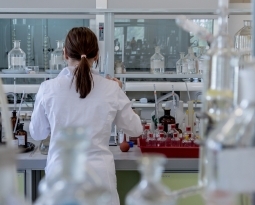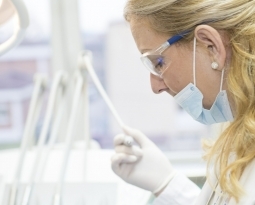“To the naked eye, they are identical” – Lab-grown diamonds growing in popularity and proving to be more than just a “diamond in the rough”
Since the 1950s, scientists have attempted to create man-made diamonds by mimicking the earth’s high pressure and temperature formation process. Now, technology has advanced to the point where lab-grown diamonds are becoming a viable alternative to natural, mined jewels.
A 2017 bridal survey by The Knot found that 25 percent of brides and grooms would consider buying an engagement ring with a lab-grown diamond. 55 percent cited the lab-grown’s conflict-free reputation and 38 percent emphasized environmental sustainability as reasons for choosing man-made jewels. These jewels garnered worldwide attention after 2006’s film Blood Diamond starring Leonardo DiCaprio which highlighted the ethical dilemmas of natural diamonds. The fictional story depicted the illicit diamond trade and its negative influence on Sierra Leone’s Civil War. DiCaprio has since invested in San Francisco’s Diamond Foundry, a laboratory that grows diamonds, in an effort to move towards more sustainable, ethical means of diamond production. “People want to know where their products come from,” Nadja Swarovski, Atelier Swarovski designer, said. “People care.”
Lab-grown diamonds are made in two common ways: High Pressure High Temperature (HPHT) and Chemical Vapor Deposition (CVD). Both require a small diamond seed. HPHT takes the seed and uses extreme pressure and temperature levels to dissolve graphite carbon with a metal catalyst. The carbon atoms then bond with the diamond seed to form a bigger diamond. CVD, in contrast, uses a plasma reactor process where the free carbon atoms from the plasma form new diamond layers on the diamond seed.
Industry professionals asserted there is little difference in quality between lab-grown diamonds and natural ones. Diamonds are evaluated on the criteria of 4 Cs: cut, color, clarity, and carat. The man-made jewels match the 4Cs criteria to their mined counterparts. “To the naked eye, they are identical,” said Susan Jacques, the Gemological Institute of America’s president and chief executive. The Institute’s chief laboratory and research officer Tom Moses added, ““The goal of labs is to grow something perfectly clear, transparent and colorless, without any occlusions (imperfections) visible at 10-times magnification.”
Aside from the ethical benefits of lab-grown diamonds, they are about 10 to 30 percent cheaper than natural diamonds of comparable size. Atelier Swarovski’s vice president and managing director François Le Troquer predicted that one day, lab-grown diamonds could even cost about 50 percent less than mined ones. Currently, lab-grown diamonds account only for 2 percent of the worldwide diamond supply. That number is expected to reach 10 percent by 2030 due to big jewelers like Swarovski and Barneys committing to man-made jewels. Austin’s Diamond District is also a major seller of lab-grown diamonds.
There are only a handful of laboratories in the world that are developing ways to make man-made diamonds. Are you testing and experimenting with forming diamonds in the laboratory to break into this emerging market? You could be eligible for the R&D Tax Credit, even if your experiments are unsuccessful, and you could receive up to 14% back on your expenses. To find out more, please contact a Swanson Reed R&D Specialist today or check out our free online eligibility test.
Swanson Reed regularly hosts free webinars and provides free IRS CE credits as well as CPE credits for CPA’s. For more information please visit us at www.swansonreed.com/webinars or contact your usual Swanson Reed representative.

















